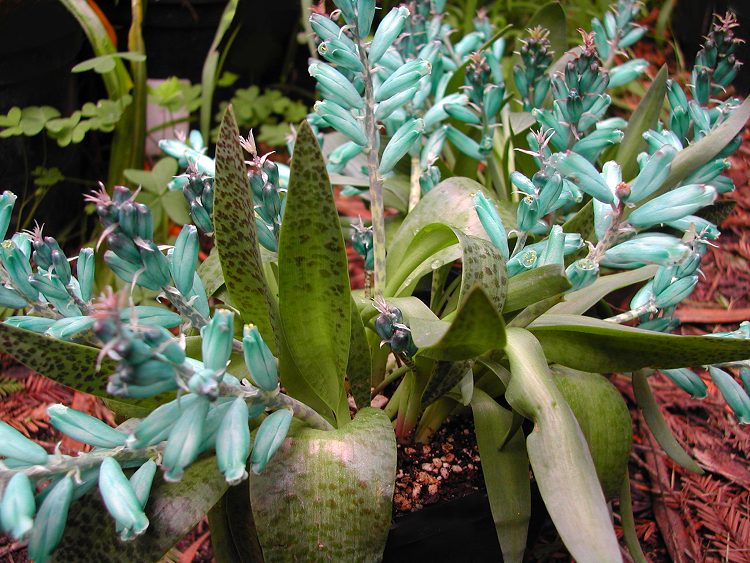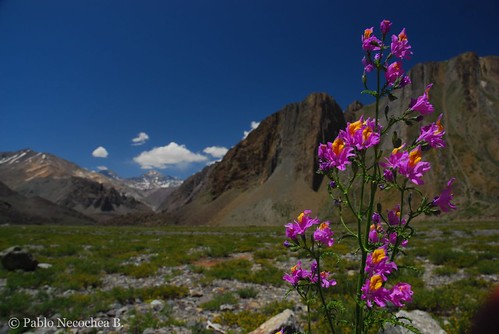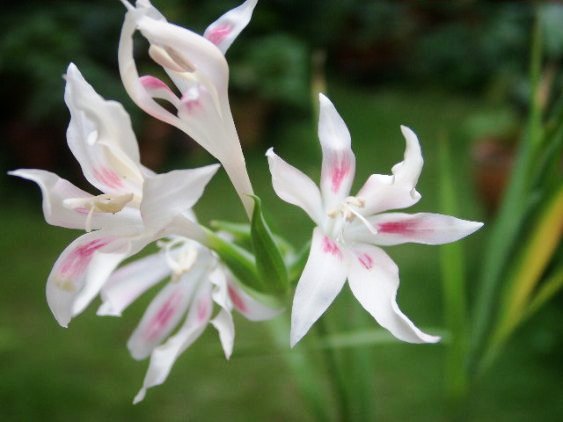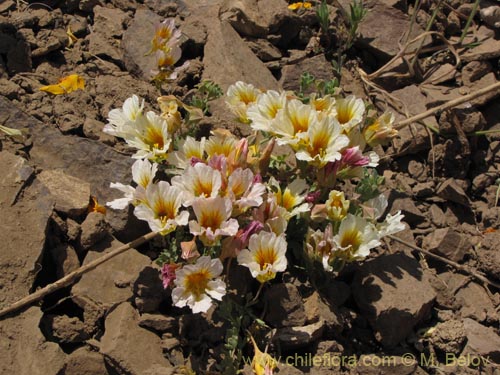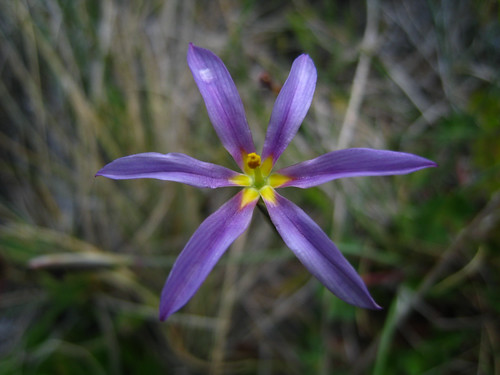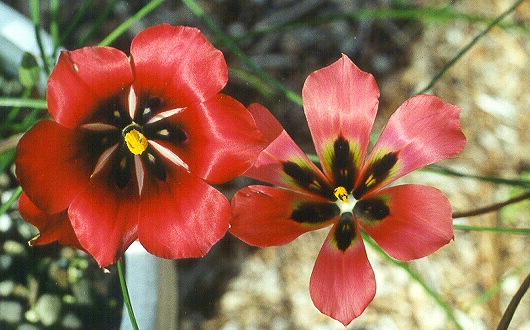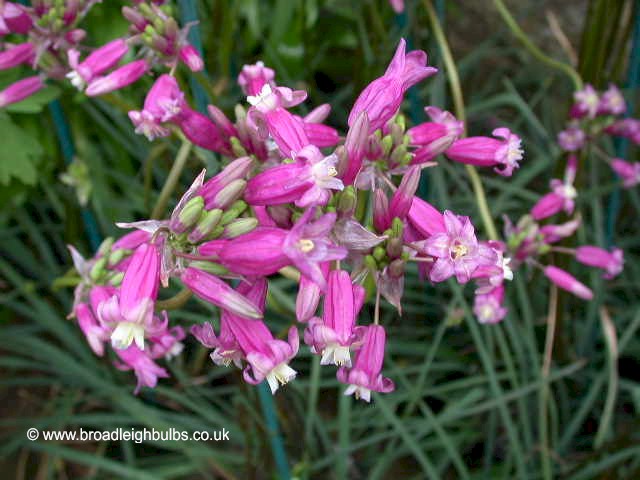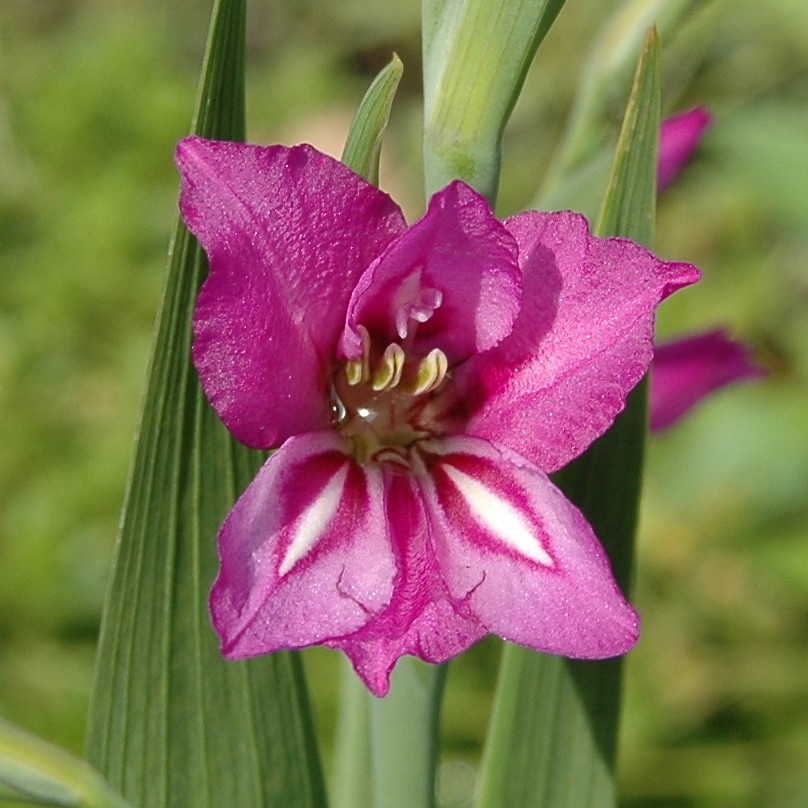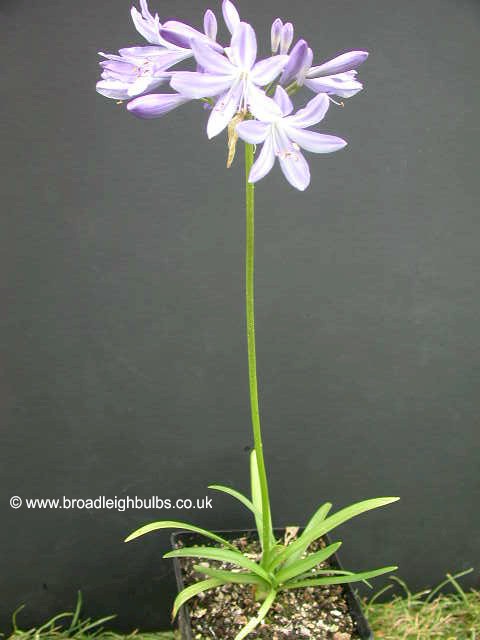Hi, like the new look? I know, it's a bit garish but at least you can't ignore it!
So what's happening? It's amazing what a bit of bottom heat does for the warm-climate seeds, especially the bulb species, or perhaps it's just that most of the pots contain bulb seeds. Either way, I now have the beginnings of a Lachenalia viridiflora, the remarkable turquoise Hyacinth-like bulbs that topped my previous post. OK, it's only a centimetre of cotyledon but it came up within 72 hours of being moved from the cold greenhouse into the propagator. It's the same story with Gladiolus hyalinus, undulatus and that thing that shall henceforth be known as Fairy Bells because I can never remember the first bit of its binomial Latin name, something ramosa. Melasphaerula or something. They all sat sulking in the cold greenhouse then a bit of heat and whoosh!
Space is, as ever, at a premium, so after germination they're whipped out into bell-shaped cloches outside and the space left behind instantly filled. I went to the incredibly-expensive garden centre yesterday, ostensibly to buy a replacement terracotta pot to replace the one I'd taken from the cactus in the bathroom to plant some Lilies or something else tall and green with colourful stuff on the top. But while there I invested in a max-min thermometer to see whether I can get any of this through next winter and it was 16C in the cloche, warm enough to keep almost anything alive and, although it wasn't a particularly cold night, it is February.
 |
| Nope, can't think of a joke |
 |
| So, sorry if this is patronising, the black bit tells us it was an amazingly cosy 16C in the protection of the cloche, although it was a very mild night anyway |
 |
| And it made it up to 22C, presumably when the sun came out this afternoon |
 |
| Considering there were only five seeds in the packet, not a bad effort from Melasphaerula ramosa (Fariry Bells) |
 |
| Schitzanthus grahamii germinated before the cloches arrived and spent too long in the gloom of the propagator, which I'm not allowed to put in the light lest it becomes able to so its job properly, so even my tinfoil backlighting couldn't prevent this becoming leggy. I've been careful with the fungicide so I might be able to rescue it by planting it more deeply, ie, with half the stem underground. But I'll wait for it to thicken up first (I wouldn't recommend this unless it's a choice between that and losing it anyway. |
 |
The Lachenalia viridiflora. See, in front of the label? It doesn't look much now but come back in about three years ... Touch wood!
|
 |
| Gladiolus hyalinus. There is also a pot of three G. undulataus but they are yet to shed their seed cases and straighten up and I'm not a talented enough snapper to capture them. |
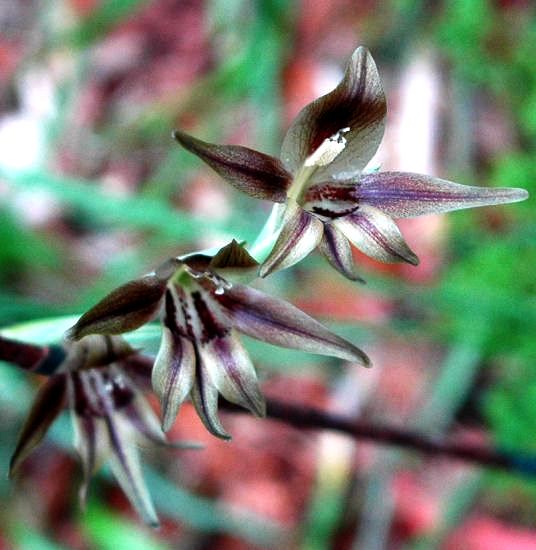 |
| The intriguing G. hyalinus |
I took the opportunity to buy a selection of other shapes and sizes of terracotta pots as they are reasonably priced and the bus stop is not too far away, any further and it would be too heavy but a thermometer and a packet of Meconopsis betonicifoia (£2.89) didn't add too much to the weight. I'm not sure why I got the poppies, the majority of their seed display was veg and herbs (zzzzzzzzzzzzzz) and the flower seeds were nothing special, apart from one nasturtium, a really pure magenta called "Jewel Cherry Eyes" but I'm already more than covered in that department with a packet of the trusty majus "Tall Mixed" which did so well last year after just about everything else had gone over; the semi-double "Whirlybird" for pots on the windowsill; tricolor, which was a gift from a kind supplier; incisum to trail down the first planting tower; and sessifolium, for the challenge!
 |
| Jewel Cherry Eyes: so gaudy it's great |
 |
| Tropaeolum majus "Tall Mixed" kept going after everything had given up last year so I hope it will grow up the thumping great hybrid Lilies and their supports (though leaving the more gentle species like L. sachalinense, oxypetalum, macklinae, tsingtuense etc alone to bulk up in peace). |
"Whirlybird" is rather less rampant than the above and doesn't send out those probing flower shoots at the end of the season like the one on the right of the picture above. It should form a tight little bush of little more than a foot in circumference, which makes life easier for the plant in the pot next to it (a pale, creamy yellow F1 I sowed yesterday, can't remember the name and can't be bothered to walk to the kitchen to find the deta ... ok it's called "Prism Sunshine" and is in the Grandiflora series so I'm just hoping it grows up as well as down. I ordered 18 shiny tin pots from my Amazon shop (just scroll to bottom or use the Amazon search tool in the guff down the right) because they were so cheap and won't break if they take a tumble. My plan is to alternate these along the windowsills (I have five windows, each a metre wide running along the sunny side of the living room and hovering above the garden a few feet below so I don't want either species to trail too much as, unless freshly watered, their centre of gravity moves perilously close to "topple". I may put half a brick in the bottom of each pot, they actively thrive on poor soil so shouldn't mind.
Not sure what to do with T. triclor. I've only got five seeds so whatever I do do I have to get right. I've also got a similar amount of Mina lobata and a red Ipomea, as well as an order for Lathyrus chilensis and a quarter tray of Lathyrus aureus which is germinating great guns, although it's more of a tumbler than a climber, as is chilensis.
 |
| The exotic and perennial (several degrees of latitude of London) T. tricolor |
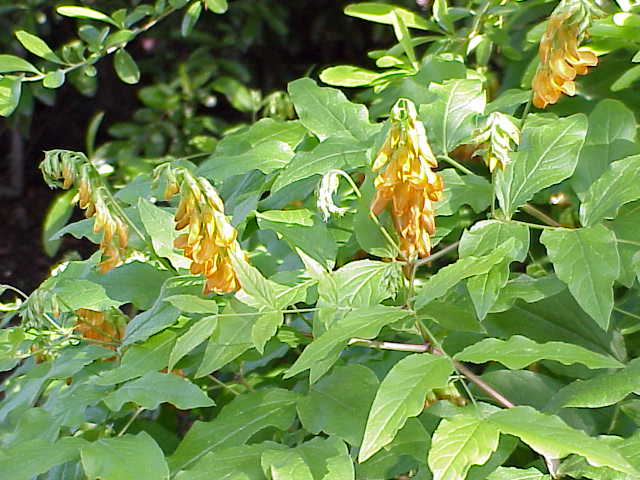 |
| Lathyrus aureus, meaning gold, of course, but cone could equally describe it as "brown" |
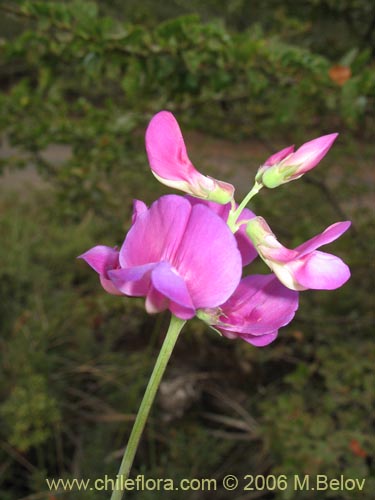 |
| L.chilensis, as photographed by my chum Mikhail at chileflora.com. A great site for exotic Andeans (plants, not women in bowler hats) that are hardy in the UK, coming as some do, from 3,000m |
 |
| Tropaeolum incisum (the greyish alien thing in the middle) still looks more like an in invader from another galaxy than a beautiful trailing orange/yellow plant but it has doubled in size since I planted it out to face the elements so it's happy. The three dwarf Rhododendrons surrounding it should cheer it up further as I chose them (from a collection of 7) for contrast. |
Now, on a totally different note, I've been swamped by germinations in the heated propagator, as you know, but perhaps the most satisfying was a few days ago when Impatiens namchabawensis popped up. This is not just a blue Impatiens, this is a plant-hunting discovery to get the feet itchy: just eight years ago, in 2003, it was found by two botanists who trekked 60 miles from the nearest road to a gorge in Tibet that is twice the depth of the Grand Canyon and as long as the UK, and there they found this:
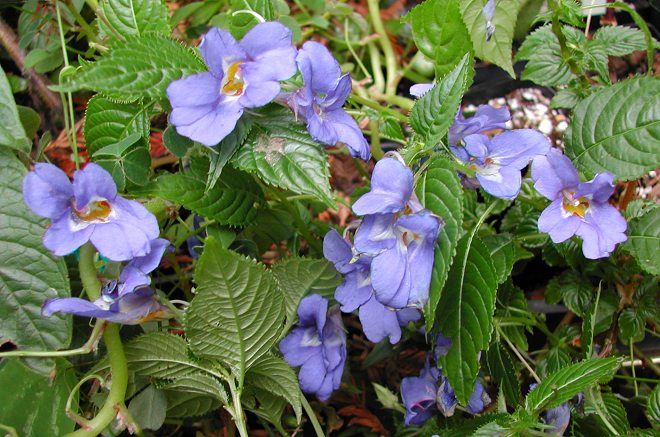 |
It was named in 2005, once all the necessary checks confirmed it to be a totally new species, not a blue form of Bizzie Lizzie, after the Tibetan name for a nearby mountain, hence the toungue-twisting nomenclature.
|
So, what next? I've been receiving and planting up bulbs like mad. I accidentally ordered Hippeastrum Sonatini "Orange Rascal" and "Viridi" twice from different suppliers but they are so stunning, and can be brought into an unheated house when in bloom, that I don't resent the extra £10 or whatever. Also Gladioli by the ton (and I still have at least 20 species to sow): G. nanus "Nymph", G. album, G. wilsonii, G. Saundersii and G. Imbricatus. I also took delivery of five obscure bulbs, actually 6, from a very nice bloke in South Africa.
The other day I took delivery, No, actually I queued for an hour at the Post Office sorting depot to pick up a parcel (the postage had been underpaid so I paid immediately online) that was supposedly the subject of an attempt to deliver five days beforehand and yet, depsite the fact we were both in, in the room with the buzzer, the postman left a card instead, marked "perishable" and "too big for letterbox". Did he ring the bell? Did he feck! It took five days of chasing it, trying by website to get it redelivered (they didn't try on the day I'd taken off to receive it) and finally getting hold of it when I took another red card which actually referred to the thing he'd "tried" to deliver the day before. The nice young man behind the counter told me to complain because it was happening so often and gave me a number with a human at the end of it (it's otherwise impossible by phone to speak to a person and their website is so infuraitingly badly designed you need to be called Hawking to use it. But as I'm already moaning about the bins and and several other Post Office failures, including an assault by a member of staff on waiting customers, I think I'll just leave it. I can't wait for privatisation when these people are expected to work for eight hours a day.
The plants were alive but a Thalictrum has become so etiolated in the darkness it is still very yellow.
 |
| It stil looks like this. And look how dry the compost is! It weighed almost nothing. And it's not the seller's fault, the box gave some clues as to the urgency of the delivery of the contents |
It should look like this:
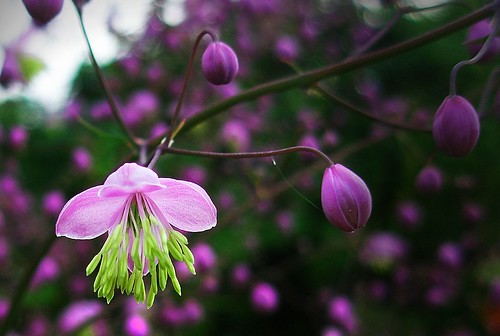 |
| Thalictrum rochebrunianum should be a revalation if the foliage ever starts to photosynthesise |
 |
| A typical delivery, this one from Bloms, who specialise in bulbs but also etiolated Thalictrums (no, I'm sure it was in perfect condition when it was packed) |
 |
| Gladiolus nanus "Nymph" has been planted in a bowl, on a layer of sand becasue the compost I had available at the time was very humusy and I didn't want the bulbs sitting on wet compost. The roots will quickly pass through into the nourishment below |
 |
| And your reward should look something like this! |
 |
| A very healthy looking Hippeastrum sonatini, this one's "Viridi Rascal" |
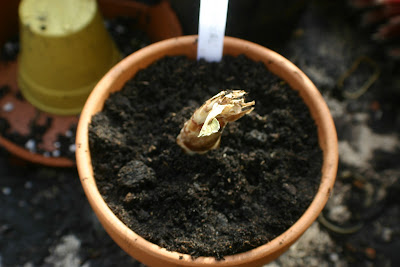 |
| And here it is with the tip left sticking out of the top of the compost. I'll water it sparingly until I see green at the top and then step it up a bit, with a fortnightly feed too. |
 |
| The end result |
 |
| And its twin, Orange rascal |
The Fritillarias are making great progress and in the next few weeks I'll have plenty of shots to show you but here are a few tasters:
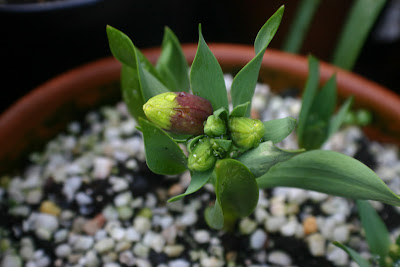 |
| F. mickhailovskyi "multiflorum" |
 |
| It will be a while before F. raddeana unveils its bells but the thing is massive already with a circumference of four inches. |
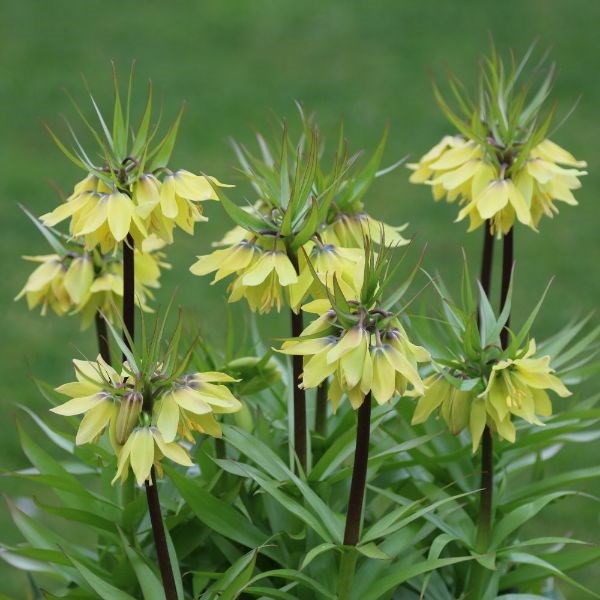 |
| Worth waiting for! |
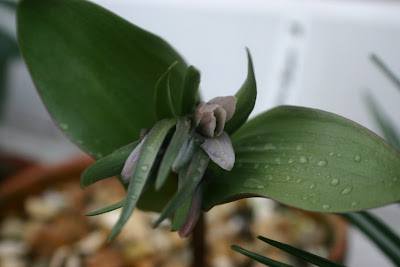 |
| F. stenanthera is about to reveal it's pinky-brown blooms. I'd expected it to be bigger but I'm not complaining! |
Followers of the black Primula, eurepes, will be pleased to know it has made it through the winter after a few scares. I lost the main crown to rot so whisked it out and any residue and then moved the plant into the bulb frame and cut back on watering to even less than the regalia Irises and the surrounding crowns have taken over and are growing well. Whether I lost the flower along with the main crown only time will tell but it's very much alive, look:
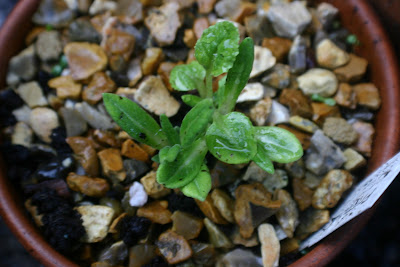 |
It's back outside now but no sign of flower buds. Ah well, I've had so much luck with other genera, particularly the Frits and the emerging lilies, plus so much from seed (even if the labels on half of them have faded to invisibility and the plants are so obscure (you know me by now), identifying them will be a nightmare. Adult leaves would help.
I know we're only at the end of the February but I think it's safe to say that the following gems have passed the snow test: |
 |
| Paeonia mlokosewitshchii was a single leaf last year. I think we're going to see something more impressive this year but a single, as opposed to double, not just the one, yellow flower? We wait with baited breath. |
 |
Erythronium "Kondo". Has wonderful yellow bells, like Lilium canadense or similar, although it is a bit tiddly. Still, it came as a dried specimen hanging in a garden centre so the fact it's alive is good news!
|
 |
| Meconopsis superba. It will have enjoyed our brief Tibetan winter snow. Not sure whether to pot it on or just feed more. I don's really want it to flower as it's generally monocarpic, ie flowers and dies and I'm busy rescuing M. grandis and M. betonicifolia "Hensol Violet" seedlings from a cat/fox/squirrell/pigeon attack and while I have no problem germinating them, it's a lot of work when you can just send off £7.50 and get one straight out of the Himalayan meadow (metaphorically speaking). |
 |
| M. napaulensis. See above! |
 |
| M. betonicifolia (the proper blue one) |
Here is an example of the faded label syndrome. I know the first picture is the lovely red Delphinium nudicaule,
And I have a pot of seeds that were sold to me as Delphinium "unknown species" which has lost the writing from its label and I have no idea where it is. I had thought the following bleached labelled pot resembled the Delphinium seedlings and might be it but I've got a new theory: I think they're Tricyrtises. First of all, let's look a the mystery pot:
And now let's look at a pot of a white Tricyrtis hybrid:
 |
I'm assuming the seedlings are from the parent, not a nearby pot, and they look very similar to the mystery pot above. And it just so happens I have, somewhere, a pot sown with a packet of mixed Tricyrtis hybrids. And I think the mystery seedlings are those Tricyrtises.
|
I do have a load to write about the amazing South African bulbs, including a hardy Crinum that has to kept in a bowl of water at all times, it being a swamp-sweller, which seems so wrong for a bulb, but I'm going to save that for the next post, mainly because I haven't photographed them (although there's a limit to the aesthetic beauty of 5 pots with the top third of the naked bulb sticking out) so here are a few shots from the roof, just to prove that spring has sprung.
 |
| Iris domestica (formerly Belamcamda chinensis) |
 |
| Lilium Hansonii, hardly setting the world alight. There were definitely flowering sized bulbs in there or at least considerably bigger ones than these! |
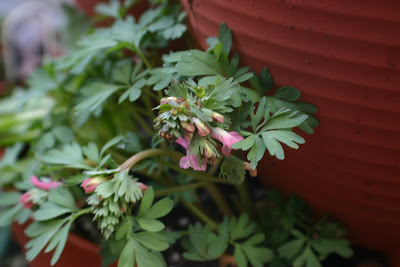 |
| A Corydalis whose name escapes me and it's dark now, anyway I've showed you it before so pay more attention! |
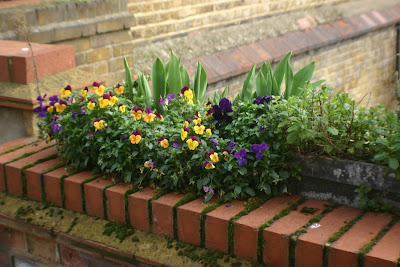 |
| My plan with the Tulips following the Violas seems to be working! |
 |
Just a little of the Lupins, Verbascums, Digitalis and Lathyrus that are off to My friend Linda's house, serving two purposes: clearing room in my garden and filling just a little of the blank canvas that is hers. Much more is to follow including candelabra Primulas, more Digitalis of myriad species, including thapsi, trojana, stewartii and viridiflora. And if those are Tricyrtises, I don't need any more, I've already got four and am bidding on a yellow with red dots on ebay so she can have as many as she likes! And I've a ton of Iris douglasiana hybrids entering their second year . And that's the tip of the iceberg. I'm so glad she has a car!
Well, I have much more to show and tell but I've been doing this for five hours and I'd already done half of it. And that doesn't include the photography. I hope everything is going as well in your garden as it is in mine and if it isn't, ask me by leaaving a comment at the end of the post. I'll do my best, although I'm a lot better on temperate ornamentals than, say, Mango trees. I'm not qualified (unless you count 1/3 of a botany degree) but my obsession is such that I refuse to let a plant die.
And remember, a plant's entire existence is geared towards staying alive, at least long enough to set seed. So you've got nature on your side!
Happy gardening my chums, and remember, if you're thinking of shopping Amazon, shop via the plantboy's site! (it's just down there, keep scrollin') xxx |















